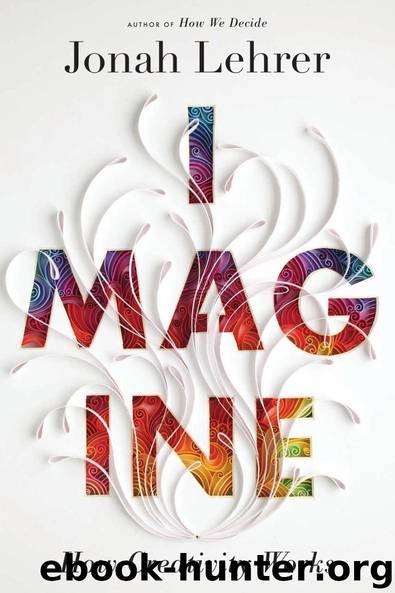Imagine by Jonah Lehrer

Author:Jonah Lehrer
Language: eng
Format: mobi, epub
Published: 2012-01-13T17:52:44+00:00
In a second study, Jia found that Indiana University students were much better at solving a series of insight puzzles when told that the puzzles came from California and not from Indiana. Here’s a sample problem:
A prisoner was attempting to escape from a tower. He found a rope in his cell that was half as long as required to permit him to reach the ground safely. He divided the rope in half, tied the two parts together, and escaped. How could he have done this?
The sense of distance from where the puzzle originated allowed these subjects to imagine a far wider range of alternatives, which made them more likely to solve the challenging brainteasers. (The answer to the sample problem is that the prisoner unraveled the rope lengthwise and tied the remaining strands together.) Instead of getting stuck and giving up, they were able to think about unusual associations, which eventually led to the right answer.
The larger lesson is that our thoughts are shackled by the familiar. The brain is a neural tangle of near infinite possibility, which means that it spends a lot of time and energy choosing what not to notice. As a result, creativity is traded for efficiency; people think in literal prose, not symbolist poetry. It’s not until we feel distant from the problems — far from our usual haunts — that the chains of cognition are loosened, and the insight becomes obvious.
What’s more, the longer you’re away from home, the stronger the effect. In a 2009 study, researchers at INSEAD and the Kellogg School of Management reported that students who lived abroad for an extended period were significantly more likely to solve a difficult creativity problem than students who had never lived outside of their birth country. The experiment went like this: The students were given a cardboard box containing a few thumbtacks, a piece of corkboard, a book of matches, and a waxy candle. They were told to attach the candle to the piece of corkboard so that it could burn properly without dripping wax onto the floor. This is known as the Duncker candle problem, and it tends to make people very frustrated. In fact, nearly 90 percent of people pursue the same two failing strategies. They begin by tacking the candle directly to the board, which causes the candle wax to shatter. Then they attempt to melt the candle with the matches so that it sticks to the board. But the wax doesn’t hold; the candle falls to the floor. At this point, most people surrender. They assume thatthe puzzle is impossible, that it’s a stupid experiment and a waste of time. In fact, only a slim minority of subjects manage to come up with the solution, which involves attaching the candle to the cardboard box with wax and then tacking the cardboard box to the corkboard. Unless people have an insight about the box — that it can do more than hold thumbtacks — they’ll waste candle after candle, repeating their failures while waiting for a breakthrough.
Download
This site does not store any files on its server. We only index and link to content provided by other sites. Please contact the content providers to delete copyright contents if any and email us, we'll remove relevant links or contents immediately.
Rewire Your Anxious Brain by Catherine M. Pittman(17598)
Talking to Strangers by Malcolm Gladwell(11902)
The Art of Thinking Clearly by Rolf Dobelli(8859)
Mindhunter: Inside the FBI's Elite Serial Crime Unit by John E. Douglas & Mark Olshaker(7847)
Becoming Supernatural by Dr. Joe Dispenza(7114)
Change Your Questions, Change Your Life by Marilee Adams(6653)
The Road Less Traveled by M. Scott Peck(6646)
Nudge - Improving Decisions about Health, Wealth, and Happiness by Thaler Sunstein(6641)
The Lost Art of Listening by Michael P. Nichols(6481)
Enlightenment Now: The Case for Reason, Science, Humanism, and Progress by Steven Pinker(6412)
Win Bigly by Scott Adams(6326)
Mastermind: How to Think Like Sherlock Holmes by Maria Konnikova(6248)
The Way of Zen by Alan W. Watts(5808)
Daring Greatly by Brene Brown(5648)
Grit by Angela Duckworth(4745)
Big Magic: Creative Living Beyond Fear by Elizabeth Gilbert(4731)
Men In Love by Nancy Friday(4337)
Flow by Mihaly Csikszentmihalyi(4059)
The Four Tendencies by Gretchen Rubin(4028)
